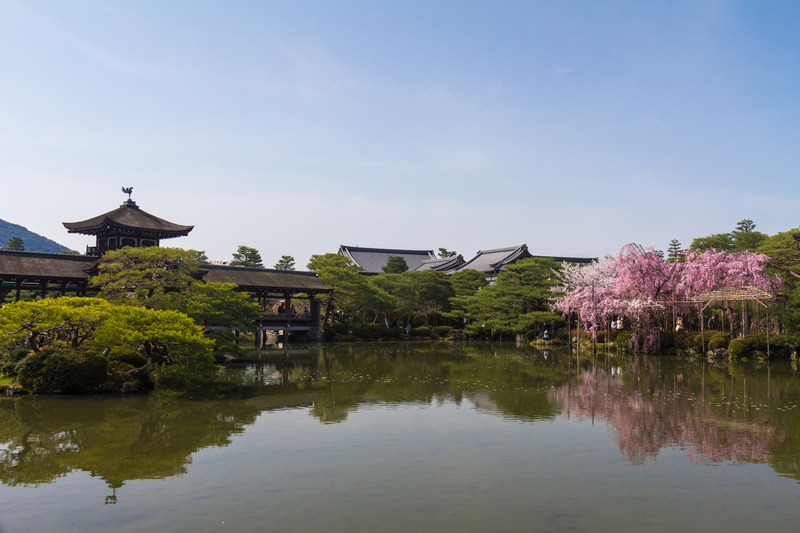Low Maintenance Garden Designs That Won't Strain Your Budget
Posted on 19/08/2025
Low Maintenance Garden Designs That Won't Strain Your Budget
Dreaming of a lush and beautiful garden but worried about the time, effort, and expense to create and maintain it? Fortunately, low maintenance garden designs provide a cost-effective solution, letting you bask in natural beauty without spending a fortune or all your free time on upkeep. In this comprehensive guide, we'll explore creative and affordable ideas for easy-care gardens that help you save money, effort, and water, all while adding style and comfort to your outdoor living space.

Why Choose a Low Maintenance Garden?
Many busy homeowners and gardening beginners desire gardens which are attractive but don't require intensive labor or continuous spending on supplies and care.
- Budget-friendly design: Spend less by choosing low-maintenance plants and simple layouts.
- Water-wise: Save on water bills with drought-tolerant options.
- Less work, more enjoyment: Spend more time relaxing and entertaining in your garden, rather than working in it.
- Sustainable living: Many low-care gardens are eco-friendly, attracting pollinators and supporting local biodiversity.
Key Principles of Low Maintenance Garden Design
Before diving into practical design ideas, let's highlight a few core principles that can help you create an easy-to-manage, budget garden:
- Choose the right plants for your climate: Favor native, hardy, or drought-resistant species.
- Reduce lawn areas: Lawns can be expensive and labor-intensive to maintain.
- Simplify garden shapes and layouts: Simple, flowing lines and defined beds are easier to manage.
- Use mulch and ground covers: Suppress weeds, retain moisture, and add nutrients.
- Limit variety for easy care: Too many different species can complicate care routines.
- Group plants by water and sunlight needs: Make watering and care more efficient.
Best Affordable Low Maintenance Garden Ideas
1. Embrace Native and Drought-Tolerant Plants
Native plants are naturally adapted to your region's climate and soil, making them resilient, cost-effective, and low maintenance. Examples include wildflowers, ornamental grasses, and many herbaceous perennials. Drought-tolerant choices like lavender, sedum, and succulents require minimal watering, making them ideal for low effort gardens.
- Ask your local garden center for a list of low maintenance natives.
- Choose evergreen shrubs and ground covers that offer year-round interest with little fuss.
2. Shrink Your Lawn
Lawns demand frequent mowing, fertilizing, and watering. Reducing the lawn can drastically cut maintenance time and costs.
- Replace part (or all) of traditional grass with ground covers like clover, creeping thyme, or moss.
- Install gravel or mulch pathways for a modern, functional touch.
3. Use Mulch for Moisture and Low Upkeep
A fresh layer of mulch not only helps retain soil moisture and suppress weeds, but also adds visual appeal to your beds.
- Organic mulches such as bark chips, leaf mold, and compost enrich the soil as they break down.
- Apply 2-3 inches annually for best results.
- Mulching is low cost and cuts down on your watering and weeding chores.
4. Plan Simple, Defined Garden Beds
Well-shaped garden beds make weed prevention, watering, and pruning much simpler to manage. Opt for curving, wide borders rather than multiple small beds for ease of mowing and plant grouping.
- Raised beds using inexpensive materials (recycled bricks, timber) can also reduce weed issues and improve drainage.
- Edge beds with recycled stones, bricks, or even buried bottles for affordable definition.
5. Incorporate Hardscaping Elements
Hardscaping, such as paving stones, gravel, or decking, can minimize planting areas, create attractive focal points, and slash maintenance time.
- Stepping stone paths are inexpensive and help keep feet off wet grass or soil.
- Simple gravel seating areas cost less than patios but offer a stylish, usable space.
Balance planting and hard materials for a harmonious, low cost, low maintenance landscape.
Budget-Friendly Plant Choices for Low Effort Gardens
Top Plant Types for Minimal Care and Cost
- Perennials (hosta, daylilies, coneflowers, sedum)
- Ornamental grasses (fescue, miscanthus, blue oat grass)
- Ground covers (creeping jenny, ajuga, vinca, pachysandra)
- Evergreen shrubs (boxwood, juniper, yew, holly)
- Succulents (hens and chicks, sedum, echeveria)
- Herbs (thyme, oregano, rosemary, sage)
Many of these don't need deadheading, frequent pruning, or much supplemental water once established. Buy young plants or seed packets to save money and watch your garden mature over the seasons.
Money-Saving Tips for a Low Maintenance Garden
- Start small. Limit your first season's planting to a manageable size, then expand as time and budget allow.
- Use free or recycled materials. Ask neighbors for plant cuttings, collect autumn leaves for mulch, or repurpose bricks and pallets for paths and raised beds.
- Install a rain barrel. Capture rainwater for free irrigation and reduce reliance on municipal supplies.
- Buy multipurpose plants. Select varieties that provide seasonal interest, color, and habitat for pollinators.
- Shop end-of-season sales. Nurseries and garden centers often discount trees, perennials, and bulbs in late summer or autumn.
DIY Low Maintenance Garden Features
Looking for unique touches that won't break the bank? Try these DIY ideas:
- Tire planters: Paint old tires for fun and colorful raised flower beds.
- Pallet compost bins: Build easy composters from free shipping pallets.
- Homemade stepping stones: Use quick-setting concrete in old cake pans for personalized garden markers.
- Recycled bottle borders: Bury glass bottles upside down to edge beds or paths.
- Bird baths from upcycled materials: Set a shallow bowl atop a stack of bricks for instant wildlife interest.
Practical Low Cost Lawn Alternatives
- Clover lawns: Stay green with minimal mowing, don't need fertilizer, and attract pollinators.
- No-mow wildflower meadows: Sown with native seeds, these provide beauty and habitat with almost no maintenance or watering.
- Gravel gardens: Fill spaces with stones and drought-tolerant plants for a Mediterranean feel that's weed-resistant and requires very little watering.
Reducing lawn can save hundreds annually in fertilizer, water, and time. Most alternatives establish quickly on a budget, especially from seed.
Tackling Pests and Weeds Without Chemicals
Low maintenance gardens don't have to rely on expensive or harsh sprays. Here are some natural solutions that save money and are better for the environment:
- Mulch to suppress weeds naturally.
- Plant densely so weeds find little space to grow.
- Use companion plants, such as marigolds, to repel common insect pests.
- Encourage birds, ladybugs, and other pest-eating wildlife with birdhouses and native shrubs.
- Hand-weed lightly but regularly.
How to Get Started with Your Own Low Maintenance, Budget Garden
1. Plan Your Space
Sketch your yard, noting sunny and shady spots, slopes, and the existing plants and hard surfaces. Identify areas you want to keep simple, and where a little investment (like a seating area) pays off.
2. List Plant Choices and Materials
Research which easy-care, affordable plants best suit your soil and sun. Visit plant swaps or community gardens for cuttings. Plan materials for mulch, pathways, or raised beds.
3. Start Small, Build Over Time
There's no need to finish your low maintenance backyard on a budget in one season. Tackle one area at a time and spread costs out.
4. Monitor, Adapt, Enjoy
Watch how your plants fare and make adjustments as needed. Most gardeners find their preferences (and workloads) get easier with each passing year.
Common Mistakes to Avoid
- Overplanting: Crowding too many plants leads to unnecessary work and poor plant health.
- Neglecting soil health: Poor soils mean more fertilizing and watering. Add compost annually for best results.
- Choosing high-maintenance plants: Avoid exotics or species that need regular pruning or pest control.
- Ignoring ongoing watering needs: Even low-care gardens require regular watering as they become established.

Seasonal Tasks for Low Maintenance Gardens
- Spring: Mulch, divide perennials, check for winter damage.
- Summer: Water during dry spells, deadhead spent flowers occasionally.
- Autumn: Rake leaves (compost or use as mulch), plant bulbs and hardy perennials.
- Winter: Minimal work--just keep paths clear and enjoy the view!
Conclusion: Beauty and Ease on Any Budget
Creating a stylish, low maintenance garden design that won't strain your budget is possible for any space, at any scale. By choosing the right plants, reducing lawns, incorporating budget-wise materials, and focusing on sustainable gardening practices, you can enjoy a lovely, living retreat with minimal time and financial investment.
With these practical tips and ideas, your easy-care garden can flourish in all seasons and become a favorite place to relax, entertain, and connect with nature--without chores or expensive bills consuming your weekends.
Start small, dream big, and let your outdoor sanctuary grow naturally!

